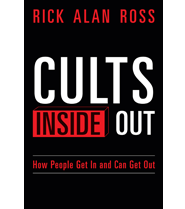Growing up in a “harmless” cult?
Published By admin
In the house I grew up in, we had an altar made of Japanese cypress. It housed carved wooden tablets for my ancestors — small tombstones embossed with golden Japanese calligraphy. The most recently departed ones had names. Not their earthly names, but poetic names for the astral world: Green Mountain, White Goat, Water Angel. At every meal, they were offered a little bit of what we ate, served on small lacquer plates on a small lacquer tray. When we ate out, we took little tiffin carriers with us so that we could bring back tiny portions of leftovers to serve to the ancestors. There was even a miniature milk bottle for a baby brother who was born prematurely. I never thought much about this ritual as a kid. We ate as a family, so it made sense to include family who had passed on, even the ones we’d never met.
My prevailing memories of growing up in Malaysia in the 90s are based on the new age Japanese religion that my parents are lifelong members of. We went to the temple often, sometimes every day of the week, to pray, chant, listen to teachings, give light, watch spirits manifest in others (usually the grownups) or had spirits manifested within ourselves. The temple was beautiful in a humble sort of way, with single-storey, interconnecting buildings sitting next to a working garden, and mature trees and bamboo groves hidden in the depths of a working-class housing estate. Across the road was a playground, and next to the playground was a large durian tree that periodically dropped its spiked heavy fruit on the ground, none of which tasted particularly good. The housing estate contained undeveloped pockets of urban jungle. I remember flattened forest snakes on the narrow road in front of the temple, run over in the night by cars.
The temple was clean and well-kept. We were taught that cleaning the temple was a good way to get rid of bad karma. We revered the simple, meditative cleanliness of Zen Buddhism, rather than the antiseptic wet-wipe obsession of late-stage capitalism. There was a weekly roster of chores to do, as well as a larger monthly clean before important ceremonies. Cleaning the toilets was seen as a particularly holy task, especially if you did it without complaining. But there were other tasks too: sweeping the grounds, mopping the floors, wiping the temple’s many windowpanes. Even today, the smell of dust on a wet rag immediately takes me back to those temple days.
Those with artistic skills, like my mother, shaped tropical flowers such as Birds of Paradise and orchids into ikebana arrangements for the temple altar. The altar was placed in the main hall, which faced the front gates and could be accessed from the side via low concrete steps. The altar housed the physical representation of the holiest being of the religion, as well as its protector — a bronze statue of a fat bald man carrying a sack over its shoulder.
Those who didn’t mind sleeping on the floor took turns to stay overnight at the temple, as volunteer security guards. A story I heard as a child is one where one of the volunteers woke up in the middle of the night, startled by the sound of the metal gates being shaken. Someone outside wanted to be let in. “Who is it?” the volunteer guard asked, not being able to see in the dark. The name given was the name of another temple faithful who had passed away — a tall, middle-aged man who I remember as eccentric but harmless. Despite these stories, and there were many, I never felt scared at the temple, only a profound sense of boredom and loneliness.
Content retrieved from: https://www.newsroom.co.nz/readingroom/growing-up-in-a-harmless-cult-by-szening-ooi-1.






